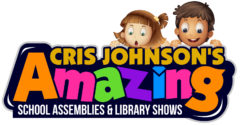
At its core, Ferst Readers is a literacy program dedicated to providing books and reading programs to children and their families to encourage literacy development from an early age. They have performed extensive research in regards to early literacy and have found that:
Given the course of brain development, it is not surprising that young children who are exposed to certain early language and literacy experiences usually prove to be good readers later. Just as a child develops language skills long before being able to speak, the child also develops literacy skills long before being able to read. National Research Council. (1998). Preventing Reading Difficulties in Young Children. Washington, D.C.: National Academy Press.
The importance of reading to and with our children is undeniable. But when it comes to young children, what is the best way to not only spark their interest at home but within the classroom? How can you, their teacher, encourage reading and improve literacy skills?
The easiest, most effective way to improve literacy skills in the classroom is reading aloud.
Reading Aloud To Younger Children
If you’ve been keeping up with my blog, then you’re already familiar with tips for “Motivating Kids To Read During The Summer” and how to “Inspire a Love of Reading” at home. But what can teachers or librarians do to motivate students to pay attention and participate during scheduled in-class reading time? Here are some easy tips to help you when reading aloud:
Create A Reading Corner
You only have so much space in your classroom but when possible, create a comfortable spot specifically for reading to your students. You want to hold their attention so sitting close together is essential. Minimize distractions by closing your classroom door and facing away from windows. For classrooms that aren’t large enough to support a permanent reading corner, move aside desks and unroll a special “reading rug” where students can gather in a group.
Let Your Students Pick
People at any age respond better when they feel invested. Familiarize yourself with the options in advance so you won’t stumble as you read, and offer a variety of books for your students to choose from. Don’t just list the titles––I know the phrase is “don’t judge a book by its cover” but in this case, let your students judge! Use containers or shelving, or hold up your predetermined selections to showcase the covers and let your students vote on which book they’d like to read next. Take it one step further by letting a different student choose a book each time you sit down to read.
Start Small And Gradually Get Bigger
Anyone who works with kids understands that young children have short attention spans. It isn’t a bad thing but it does mean you have to get creative with your book selections. Start with two or three smaller books and stop when your students begin to lose focus. The more you read with them, the longer their attention spans grow, the bigger the books you can read.
Transform Into A Storyteller
The best thing about younger children is the sillier you act, the goofier you get, the more fun they will have! Make reading time memorable:
- Act out books as you read.
- Alter your voice for different characters.
- Slow your pace during suspenseful scenes.
- Raise or lower voice when characters yell or whisper.
- For children who can read without assistance, invite them to participate by assigning different roles.
If you are enthusiastic and having fun while reading, so will your students.
Re-Read Books To Improve Comprehension
Not every student will read at the same level, nor will every student retain what you read at the same level. You may get tired of re-reading the same book over and over again but our interests don’t always line up with the interests of our students. Instead of pushing for a new book, remind yourself all the ways your students benefit from reading “If You Give A Mouse A Cookie” for the fourth (or even twelfth) time. Re-reading will improve both your students’ language skills and reading comprehension.
Follow Up Reading To Support Comprehension
Read to your students regardless of their age or level, and followup reading with questions, games, and activities that invite your students to discuss the book you’ve just finished. Ask about the story itself, the characters, why a character made a specific decision and how the plot changed because of it. Invite your students to draw their favorite scene and then ask them to explain why this scene in particular stood out. Let students rewrite the ending. Have students design their own cover. Offer anything and everything to start a discussion and get your students excited to share what they’ve learned.
Let’s Go On An Adventure Together…on a Reading Adventure!
My whimsical, wacky school assembly “I Love to Read” is a reading-themed hoot designed to get YOUR students excited about reading anytime during the school year! Using a combination of magic, goofy kid-friendly humor, audience involvement, music, and silly props, I bring stories to life and tailor the exact books to fit your students ages and reading levels. Click here to learn more about “I Love to Read” or contact me today for more info!


